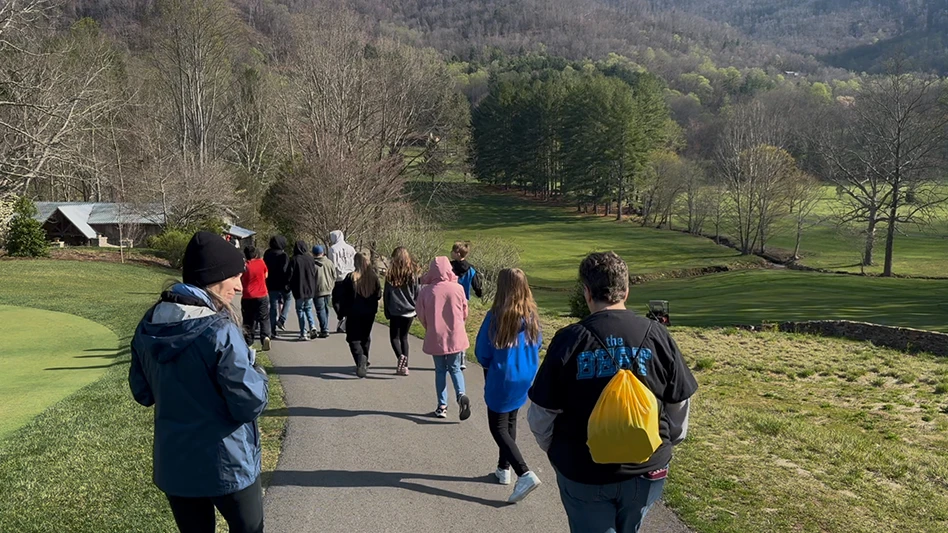
I think we have all been there. Early morning on the golf course, the sun crests over the horizon and the light filters through the trees to show a sight many don’t ever get to experience — those “magic hour” moments.
We pull out our phones and feverishly start snapping pics from different angles and vantage points. We run to our chosen social media platform and wax poetic, posting phrases such as “Blessed to be here,” “This is what it’s all about” and “The crew is killing it.” Before you let that feeling slip away, there is someone else we need to be thanking: the golf course architect.
I know what you are saying, “All they do is design the dang thing. It’s up to us to grow it in and maintain it to its present condition.” On some level this is true, and I don’t want to take away anything from what our staff does on a day-to-day basis. What I’m trying to say is sometimes the golf course architect gets low billing in this whole scenario.
I’m lucky enough to work on a Pete Dye design and it is amazing. The contouring and the angles in which Pete routed The Club at Chatham Hills are breathtaking. You know as well as I do that most people who play golf these days only care about one thing: How fast are the greens today? It’s sad to think that these individuals are missing out on what’s really important about golf. The rolling hills, the different angles you are given when attacking the green in relation to your tee shot, the placement of hazards and the shadows they cast to give the illusion of depth and size. All these elements converge to form the golfing experience.
Alister MacKenzie said, “Any architect worth his weight in salt would know that beauty is more important than strategy.” I’m just as guilty as the next guy and I get wrapped up in the green speeds as well. As I mature as a turf professional, I try to make it a point to educate myself on what golf course architecture really is and how it relates to my position. Whether it’s the Golden Age greats with their template holes or the modern-day giants with their minimalist designs, these courses were designed to challenge golfers and expand all their senses.
You might be thinking these designs are impossible to maintain with our budget and some features are too extreme. I get it. Pete designed The Club at Chatham Hills with more than 190 bunkers. It can be a struggle to maintain these bunkers, but we strive to keep them in top condition so we can match up with how they were originally designed to play. We task ourselves with high expectations, because we see the beauty that others do not. Thanks to the golf course architects, we get to have those “magic hour” moments daily and it pushes us to be better. I say all this knowing that the labor market is thin and finding employees is the most challenging thing we do.
I don’t want you to get the wrong idea. Sometimes change is necessary and hard decisions must be made. I don’t fault or judge others for those choices, but if you have the knowledge and history of what made your course special, it may open the doors for alternate decisions. If possible, dive into the history of your course and find out what makes your course design important to your membership and ownership and focus on that.
When you show personal interest and reflect the interests of others, people are more apt to listen to what you want to accomplish. You may end up opening their minds — and their pocketbook — a little bit further. It doesn’t matter if it’s a Golden Age gem designed by A.W. Tillinghast or a run-of-the-mill course designed by Rosco P. Coltrane, all golf courses have a history and there is value in that history.
That’s the difference between a good and a great turf professional. The good look at the course, accept it at face value, and never develop a curiosity for its history or design. The great look at the course as a challenge, embrace and study those obstacles, and highlight those attributes that make it unique.
Golf course architecture is as fundamentally important as the grass that is growing on it. When you do get those “magic hour” moments, remember there was someone else standing there having those same feelings long before we took over. Our friend, the golf course architect.

Explore the December 2021 Issue
Check out more from this issue and find your next story to read.
Latest from Golf Course Industry
- Ahead of the sustainability curve
- From the publisher’s pen: Watery dilemma
- The Aquatrols Company hires marketing manager
- Renovating Bredemus in West Texas
- Renovation starts at Okatie Creek GC at Sun City Hilton Head
- The Fittest Podcast in Turf: Episode 1
- New 6-hole course debuts in Oklahoma
- GCSAA announces Grassroots Ambassador Leadership Award recipients





